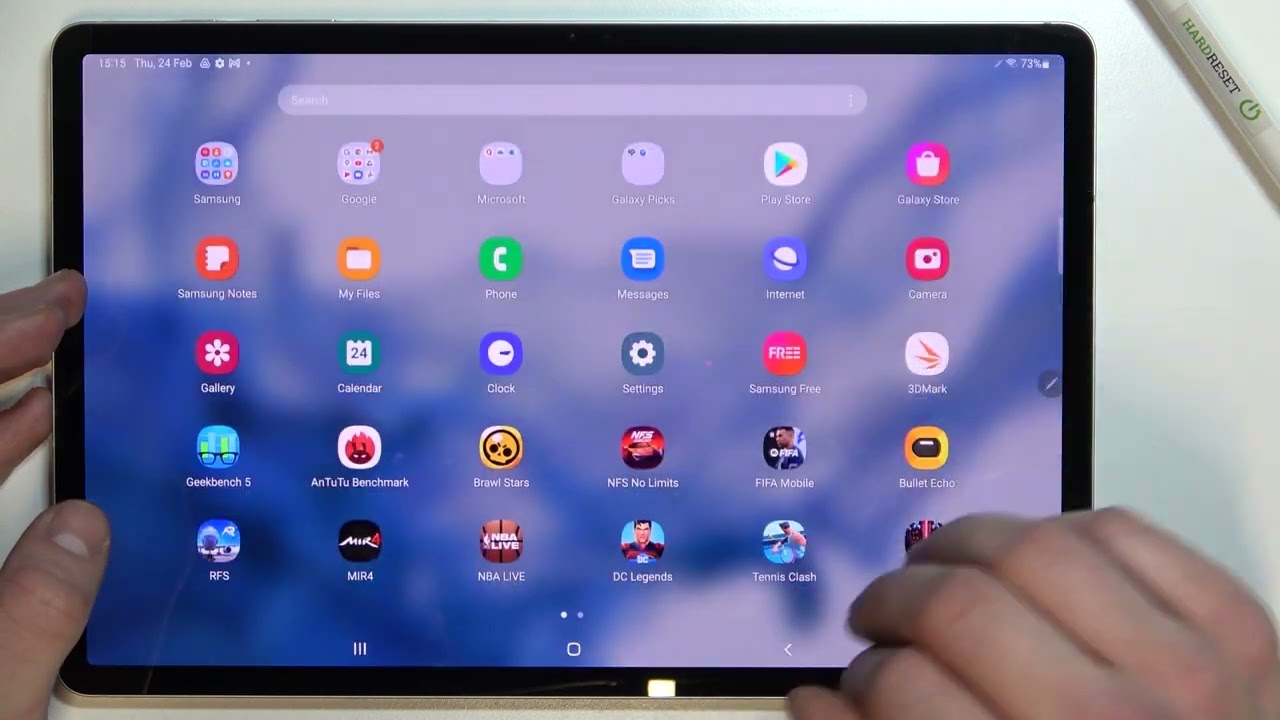
Accessing the Sound Settings
Customizing ringtones on your Android tablet begins with accessing the sound settings. Follow these steps:
- Open Your Android Tablet: Turn on your device and unlock it.
- Navigate to Settings: Tap the "Settings" icon, usually represented by a gear or cogwheel.
- Sound Settings: Scroll down in the settings menu to find "Sound" or "Sound & Vibration." Tap to open.
Finding Ringtone Options
Within the sound settings, several options related to ringtones are available:
- Ringtone: Tap "Ringtone" to see a list of pre-installed sounds.
- Notification Sound: Controls the sound for notifications.
- Alarm Sound: Manages the sound for alarms.
- Default Ringtone: Sets the default tone for new contacts.
Choosing a Pre-installed Ringtone
To use a pre-installed ringtone:
- Select Ringtone: Tap the desired ringtone from the list.
- Preview: If available, tap to hear a preview.
- Set Ringtone: Tap "Set" or "Save" to apply.
Customizing Notification Sounds
Differentiate notifications by customizing their sounds:
- Notification Sound: Tap "Notification Sound" in the sound settings.
- Select Notification Sound: Choose from the list of available sounds.
- Preview: Tap to hear the sound before setting.
- Set Notification Sound: Tap "Set" or "Save" to apply.
Customizing Alarm Sounds
Set different alarms for various times of the day:
- Alarm Sound: Tap "Alarm Sound" in the sound settings.
- Select Alarm Sound: Choose from the list of available sounds.
- Preview: Tap to hear the sound before setting.
- Set Alarm Sound: Tap "Set" or "Save" to apply.
Downloading Custom Ringtones
For custom ringtones not available in pre-installed options, download them from various sources.
Using Google Play Store
The Google Play Store offers a variety of ringtones:
- Open Google Play Store: Launch the app on your tablet.
- Search for Ringtones: Use keywords like "custom ringtones" or "ringtone download."
- Select Ringtone App: Choose an app offering ringtones, such as Ringtone Maker or Custom Ringtones.
- Download and Install: Tap to download and install the app.
- Access Ringtones: Open the app and browse available ringtones.
- Download Ringtone: Follow prompts to save the ringtone to your device.
- Set Custom Ringtone: Return to sound settings to select the downloaded ringtone.
Using Third-Party Websites
Many third-party websites offer free and paid ringtones:
- Search for Websites: Use a web browser to find websites offering ringtones.
- Select Website: Choose a reputable site with high-quality ringtones.
- Download Ringtone: Download the ringtone file.
- Transfer File: Use a USB cable or cloud storage services like Google Drive or Dropbox to transfer the file to your tablet.
- Set Custom Ringtone: Return to sound settings to select the downloaded ringtone.
Creating Custom Ringtones
Feeling creative? Make your own custom ringtones using various tools.
Using Ringtone Maker Apps
Ringtone maker apps allow creation from any audio file:
- Install Ringtone Maker App: Download and install from the Google Play Store.
- Open App: Select the audio file for your custom ringtone.
- Trim Audio File: Adjust the length to your preference.
- Save Custom Ringtone: Save the trimmed file as a custom ringtone.
- Set Custom Ringtone: Return to sound settings to select the created ringtone.
Using Third-Party Software
Prefer using third-party software? Tools like Audacity or Adobe Audition can help:
- Record Audio File: Use a microphone or import an existing file.
- Edit Audio File: Trim, cut, and mix using various tools.
- Export Custom Ringtone: Save the edited file as MP3 or WAV.
- Transfer File: Use a USB cable or cloud storage to transfer the file to your tablet.
- Set Custom Ringtone: Return to sound settings to select the created ringtone.
Setting Different Tones for Different Contacts
Assign specific ringtones to individual contacts:
- Open Contacts App: Launch the contacts app on your tablet.
- Select Contact: Choose the contact for a specific ringtone.
- Edit Contact Information: Tap the contact's name, then "Edit" or "Details."
- Ringtone Option: Scroll to find the ringtone option. Tap to select a different tone.
- Save Changes: Save to apply the new ringtone to that contact.
Additional Tips
- Backup Custom Ringtones: Regularly back up custom ringtones using cloud storage or external devices.
- Check Compatibility: Ensure the ringtone file is compatible with your tablet.
- Use High-Quality Ringtones: High-quality ringtones provide a better listening experience and make your device sound more professional.
By following these steps and tips, you can fully customize your Android tablet ringtones to match your style and preferences, making your device truly unique and personalized.
